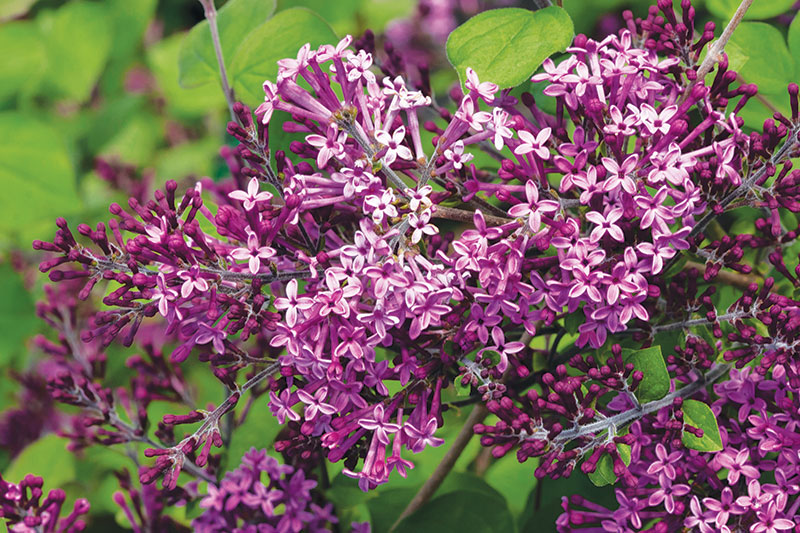Aromatic plants are not just a timeless gardening staple, but part of a wellness trend
Fragrant flowers are irresistible in any garden. We know this by the first reaction most people have when presented with a flower. They immediately put their noses into it in search of its scented treasure, even though they do not know where the blossom has been, what has crawled on it, or what may still be inside.
Fragrance is a powerful force in our lives, so powerful that memories are often triggered by certain scents.
Katie Tamony, the chief marketer at wholesale growers Monrovia, believes that fragrant plants are not just a timeless garden staple, but part of a trend towards wellness gardening.
“Gardening is increasingly becoming an activity that allows people to remove themselves from the noise of life,” she said. “It makes them feel rejuvenated and provides a more positive outlook. Our research shows that this trend has been increasing since 2020. Fragrance is a big part of this trend.”
With the availability of choice plants, anyone can have a fragrant garden.
“Of course, fragrance has always played; and will continue to play a major role in gardening, but it also speaks to a recent trend of using nostalgic plants – like roses, lilacs, and hydrangeas,” said Natalie Carmolli, a spokeswoman with the Proven Winners brand of plant introductions.
Fragrance is possible every season in milder climates, such as west of the Cascades in the Pacific Northwest. Each season, including winter, has a palette of scented flowers.
“There’s something humanly innate about the need to experience the outdoors with all our senses,” said Heidi Mortensen, rose portfolio manager for Star® Roses and Plants. “Consumers now want more than just a pretty plant — they want an experience. The consumer demand for fragrance is higher than ever.”
A plethora of roses
According to Tamony, roses had fallen from prominence as a fragrant plant, but they are roaring back.
“In the past, rose breeding focused on disease resistance and unfortunately removed fragrance from many varieties,” she said. “Modern breeding brought fragrance back, allowing us to bring easy care, fragrant roses to market.”
Monrovia’s Eau De Parfum™ rose series features easy-care plants that do not sacrifice beauty or fragrance. The bushes carry lush foliage and large, scented blossoms that flower repeatedly from spring until the first frost. The patented roses include Bubbly Rose (Rosa ‘Noa1112130’), Bling Rose (R. ‘Noa16079’), Blush Rose (R, ‘Noa1811108’), and Berry Rose (R. Noa11356’). The 2023 Farwest Show’s New Varieties Showcase featured the Bling Rose.
One of the roses Mortensen recommends from Star® Roses and Plants is a disease-resistant, white flowering Bolero™ rose (Rosa ‘Meidelweis’), which has a robust fragrance with a suggestion of tropical fruit and roses. Another recommendation is Parfuma® Bliss (Rosa ‘KORmarzau’), a rose with disease-resistant foliage, blooms in flushes during the season with warm pink petals and apricot centers.
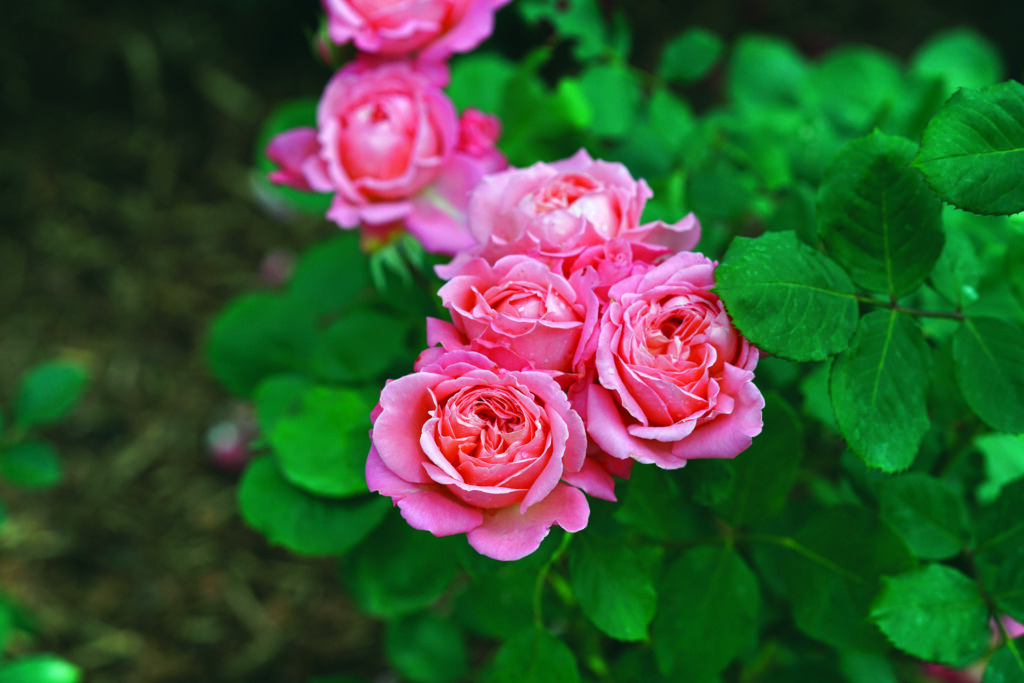 One of the roses Carmoli recommended was developed in Serbia. Proven Winners Reminiscent® garden rose series have large, lush flowers with a powerful scent and come in hues of pink (Reminiscent® Pink Rose – R. × ‘BOZFRA021’), cream (Reminiscent® Crema Rose – Rosa × ‘BOZFRA121’), or coral (Reminiscent® Coral Rose – R. × ‘BOZFRA221). These plants resist black spot and powdery mildew.
One of the roses Carmoli recommended was developed in Serbia. Proven Winners Reminiscent® garden rose series have large, lush flowers with a powerful scent and come in hues of pink (Reminiscent® Pink Rose – R. × ‘BOZFRA021’), cream (Reminiscent® Crema Rose – Rosa × ‘BOZFRA121’), or coral (Reminiscent® Coral Rose – R. × ‘BOZFRA221). These plants resist black spot and powdery mildew.
A disease-resistant tea rose for the cutting garden, Romantica® Moonlight (Rosa ‘Meikaquinz’) has highly fragrant, light yellow flowers.
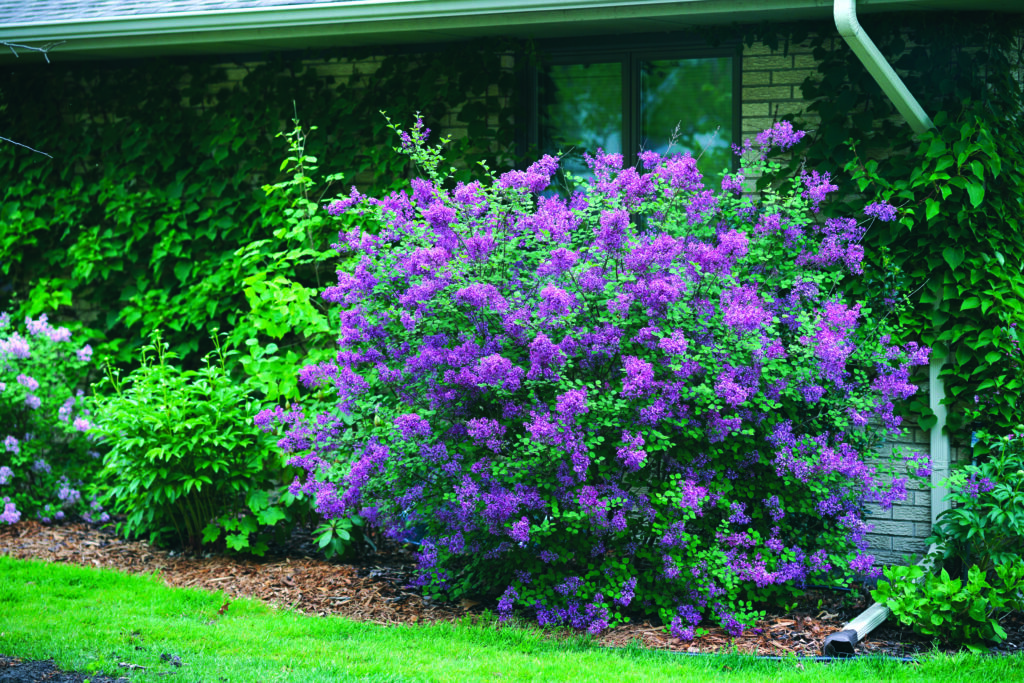 Improved lilacs
Improved lilacs
Lilacs are notorious for succumbing to powdery mildew, but several new varieties from Star® Roses and Plants are more disease resistant, Mortensen said. The New Age™ Syringa ushers in a better era with New Age™ White Lilac – Syringa vulgaris ‘G13103’. This modern lilac is compact, growing 4-5 feet tall, and mildew-resistant. Another compact is New Age™ Lavender Lilac – Syringa vulgaris ‘G13099’.
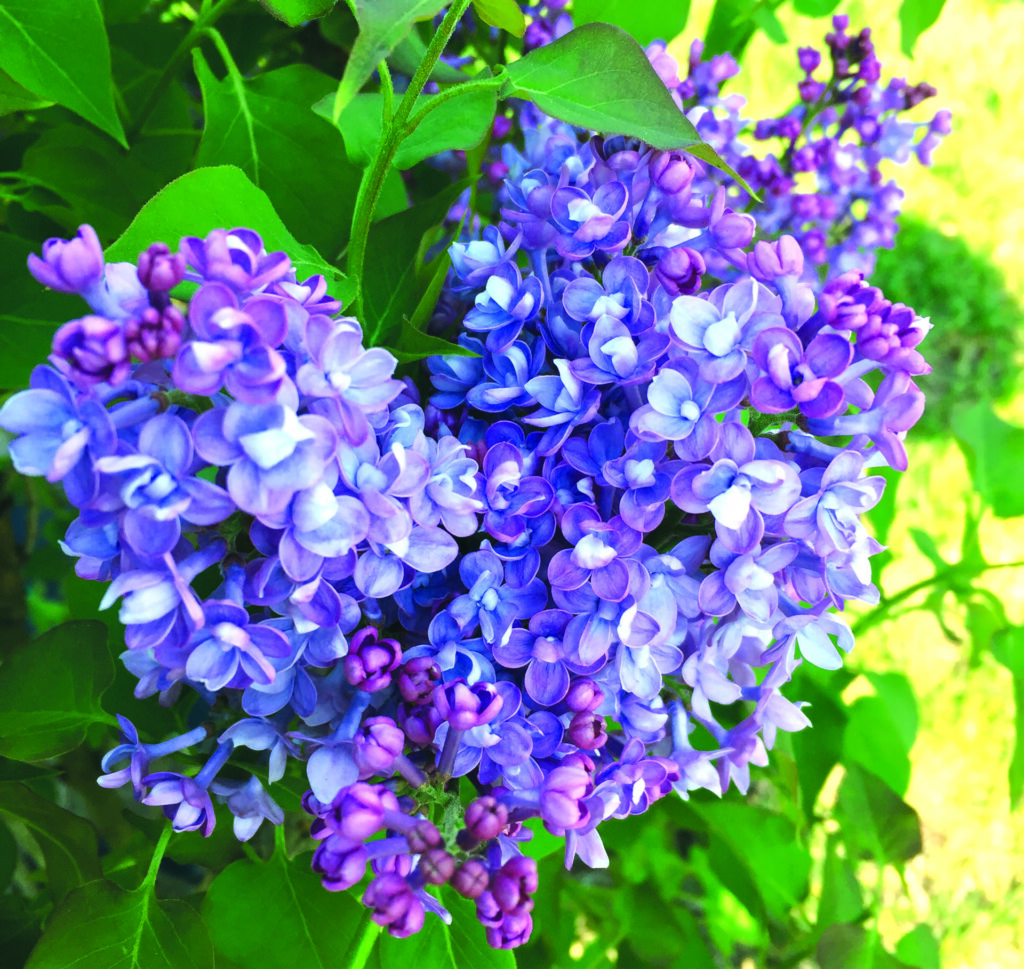 The lilac season quickly comes and goes. So reblooming lilacs like Bloomerang® Dark Purple (Syringa × ‘SMSJBP7’) from Proven Winners are a great addition, Carmolli said. The disease-resistant, deciduous shrub reaches 4 to 6 feet tall in a pleasing round shape.
The lilac season quickly comes and goes. So reblooming lilacs like Bloomerang® Dark Purple (Syringa × ‘SMSJBP7’) from Proven Winners are a great addition, Carmolli said. The disease-resistant, deciduous shrub reaches 4 to 6 feet tall in a pleasing round shape.
The best-smelling lilacs come from Syringa hyacinthiflora. The hybrid Scentara® Double Blue (Syringa × hyacinthiflora ‘SMNSHBBL’) is Proven Winners’ most fragrant, said Carmolli. The disease-resistant lilac reaches 6–8 feet tall. The flowers acquire a blue tone under the spring sun.
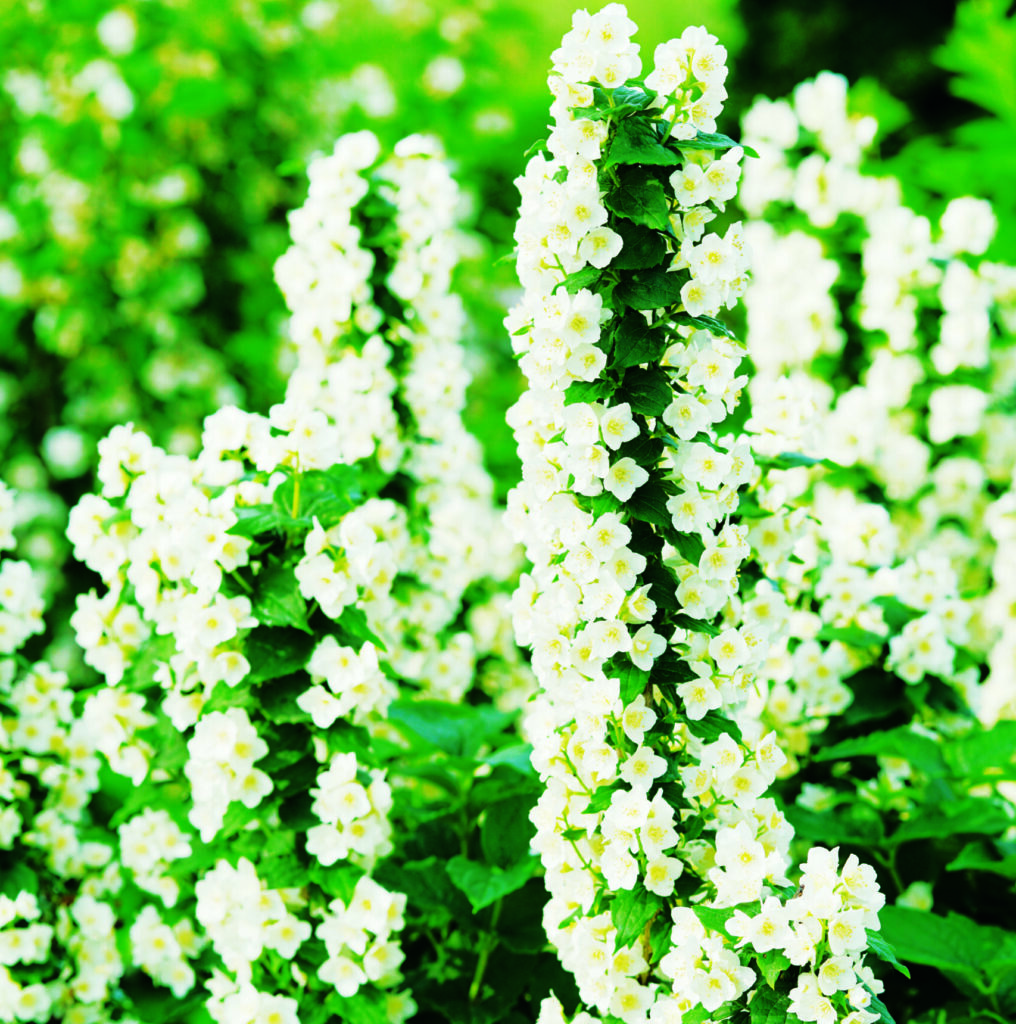 Other aromatic offerings
Other aromatic offerings
But there are many other options beyond the traditional roses and lilacs.
The drought-tolerant Illuminati Tower® mock orange (Philadelphus coronarius ‘SMNPVG’) from Proven Winners adds a citrusy scent to the garden, Carmolli said. In late spring, the plant offers upright branches smothered in white blossoms. The shrub claims only a small footprint, growing 6 feet tall by 3-4 feet wide. The variegated Illuminati Sparks™ mock orange (Philadelphus coronarius ‘SMNPVB’) is shorter and has the same fragrance.
“Some describe the flowers as having citrusy smell with just a hint of jasmine. But traditionally this shrub didn’t offer much beyond the bloom,” Carmolli said. “Our Illuminati® series of Philadelphus offers both the allure of deliciously scented blooms and interesting foliage that stays neat and clean all season.”
Some gardens cannot go without a fragrant viburnum in spring to tickle the fifth sense.
The species Korean spice viburnum (Viburnum carlesii) and the cultivar Spice Baby™ Koreanspice Viburnum (Viburnum carlesii ‘SMVCB’) are deer resistant, Carmolli said. The fragrant white flowers with a blush of pink provide a spicy fragrance that seasons the fresh spring air. Spice Baby reaches 3½– 5 feet tall.
Year-round aroma
With more interest in creating attractive gardens for all seasons, customers of Swanson’s Nursery, a Seattle-based retail garden center, look for plants that flower in winter, according to Aimee Damman, the store’s marketing director.
“This usually means plants that flower in the winter, have fall color, and interesting bark or structure, or are evergreen,” she said. “Fragrance is more of an integral part of the holistic garden experience, another attribute like color and texture.”
On a mild November to January day, it is delightful to have the surprise of a sweet scent flooding the garden. Swanson’s Nursery blog helps introduce people to fragrant plants from each season.
The nursery’s perennials buyer, Katy Lockwood, agrees. “I think gardening is an extremely sensory-rich pastime, and that fragrance is just another way to experience your garden. We receive many requests for specific fragrant plants and for fragrant plants in general.”
“We often get requests for cold-season fragrant plants such as sweet box, paper bush, winter daphne, Clematis ‘Snowdrift,’ winter jasmine, and witch hazel,” Damman said. “It’s hard to say whether the customer specifically wants fragrance or if it’s because these plants are the only ones flowering at that time, and they happen to be fragrant as well.”
It is an excellent opportunity to introduce them to something new and less well-known.
“Sarcococca is a great example of a lesser-known fragrant plant, as are scented geraniums and groundcovers that emit a fragrance when stepped on or rubbed. People often associate fragrance only with large, showy flowers,” Damman said.
Sarcococca, commonly called sweet box, is related to the boxwood with foliage that smells like cat urine whenever it rains. However, Sarcococca hits the jackpot with a lovely winter fragrance. On a mild winter day, the sweet fragrance awakens the fifth sense, making anyone within smelling distance take a deep breath. Yet the white flowers are tiny, almost inconspicuously nestled in its glossy, green foliage.
Daphnes are highly sought after. Swanson’s shrub buyer, Bram Olson, confirms their popularity. “We recommend them because they are highly fragrant and can be grown in sun or shade. We can’t get enough daphne plants to keep up with demand.” He continually looks for more sources to stock their shelves.
The Banana Split® Daphne (Daphne odora ‘Monzulzay’) was a new selection from Monrovia that debut at the 2023 Farwest Show’s New Varieties Showcase. The fragrant, late winter flowers may have to take a back seat to the green leaves and wide golden margins of its variegated foliage. For the shade garden, the foliage will be a highlight all year. The shrub grows 3 to 4 feet tall.
Going beyond the popular Camellia japonica cultivars opens the home gardener to another world filled with a winter wonderland of fragrance. Camellias are fall-to-winter and winter-to-early-spring flowering, evergreen shrubs, some with highly notable fragrant flowers.
Camellia × ‘Ack-Scent’ is one of the most prized fragrant pink flowers with its delicious, spicy scent. The shrub is a cross between two fragrant shrubs, C. japonica ‘Kramer’s Supreme’ and ‘Fragrant Pink Improved’ with its C. lutchuensis and rusticana parentage. ‘Fragrant Pink Improved’ has a scent similar to Osmanthus.
Camellia sasanqua hybrids mostly bloom in mid to late fall through December, with a splattering of flowers in January. The following have scented white flowers: ‘Fragrant Fairies’, ‘French Vanilla’ with a vanilla fragrance, ‘Setsugekka’, and C. × ‘Winter’s Snowman’.
Many plants, especially herbs, exude scent through their evergreen foliage. Lavendula is one species that has almost a cult-like following in popularity and brings another way to bring fragrance into the garden.
“We love Javelin Forte™ Deep Purple Spanish Lavender (Lavandula stoechas ‘LABZ0004’) because it flowers early and has stunning deep purple bracts,” she said.
The English lavender plant, Lavandula angustifolia ‘Annet’, is not only fragrant, its strong stems are perfect for the cutting garden. Home gardeners will like it for culinary use or its deep purple buds for fresh or dried cut flowers, crafts, and fragrances.

